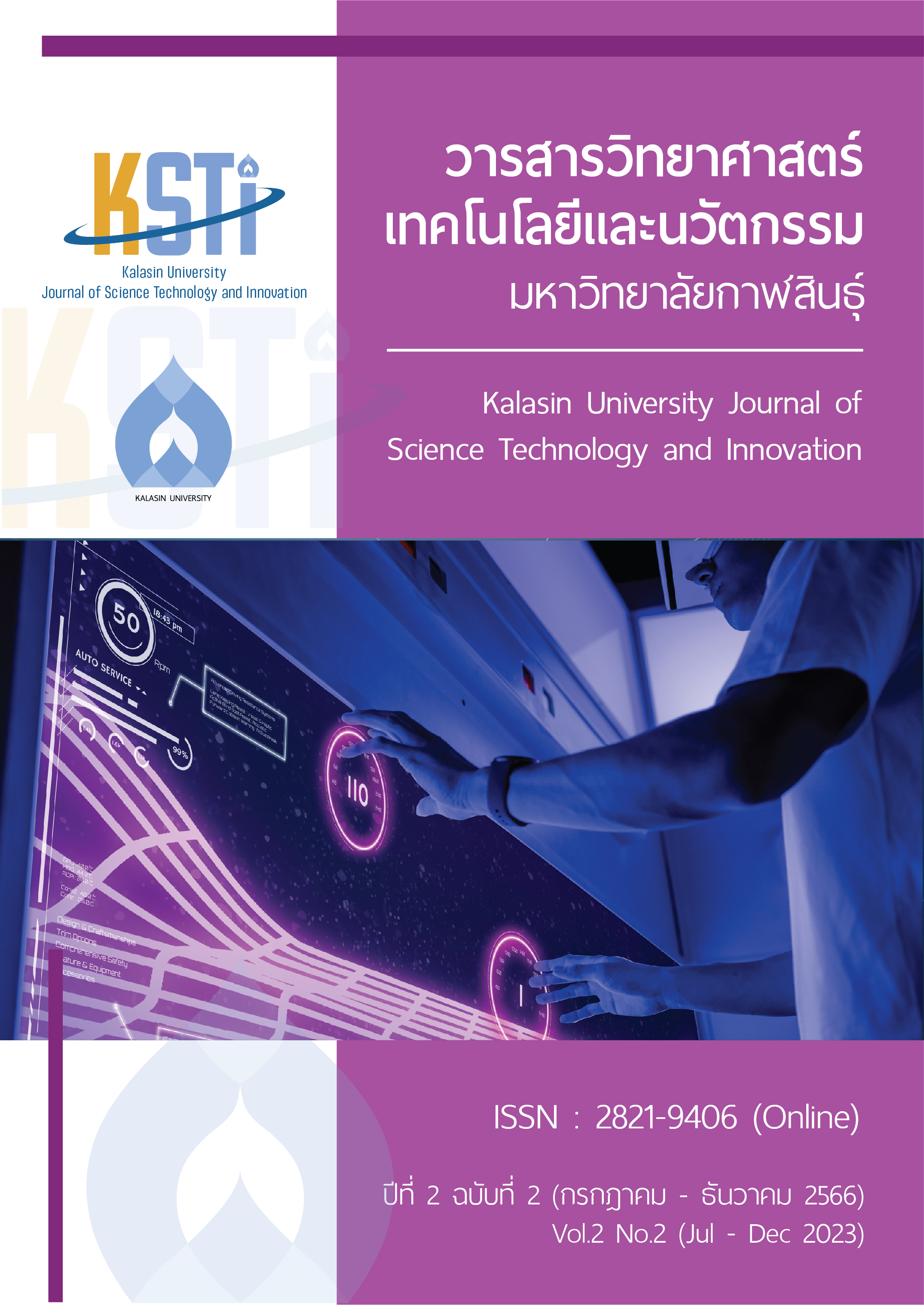Comparison of deep learning approach for water bottle waste Classification
Main Article Content
Abstract
An used plastic water bottle is an important problem affect to the ecosystem. The aim of this research is to compare the efficiency in classification from datasets of the used plastic water bottle using Convolution Neural Network (CNN). The water bottle waste dataset consisted of 6 classes with a total of 841 images. First, a performance comparison was performed to find the best model from the three CNNs (EfficientNetV2B0, EfficientNetV2B1 and Efficient NetV2B3). EfficientNetV2B1 architecture has the highest accuracy of 98.30%. Then, it improves the three architectures’ performance using adding layers to the fully connected layer. The experimental results showed that the error of all three CNNs decreased compared to the method without adding layers. The highest accuracy achieves 98.59% from EfficientNetV2B3. Furthermore, EfficientNetV2B3 that the best model from the last experiment test on the testing dataset. The result of the highest accuracy was 97.16%, and the error was 0.08
Downloads
Article Details

This work is licensed under a Creative Commons Attribution-NonCommercial-NoDerivatives 4.0 International License.
The owner (Research and Development Institute, Kalasin University), the authors agree that any copies of the article or any part thereof distributed or posted by them in print or electronic format as permitted will include the notice of copyright as stipulated in the journal and a full citation to the final published version of the contribution in the journal as published by Research and Development Institute, Kalasin University.
References
Majchrowska S, Mikołajczyk A, Ferlin M, Klawikowska Z, Plantykow MA, Kwasigroch A, et al. Deep learning-based waste detection in natural and urban environments. Waste Management 2022;138:274–84. https://doi.org/10.1016/j.wasman.2021.12.001.
Armitage S, Awty-Carroll K, Clewley D, Martinez-Vicente V. Detection and classification of floating plastic litter using a vessel-mounted video camera and deep learning. Remote Sens (Basel) 2022;14:3425. https://doi.org/10.3390/rs14143425.
Sai Susanth G, Jenila Livingston LM, Agnel Livingston LGX. Garbage waste segregation using deep learning techniques. IOP Conf Ser Mater Sci Eng 2021;1012:012040. https://doi.org/10. 1088/1757-899X/1012/1/012040.
Fadlil A, Umar R, Sunardi ., Nugroho AS. Comparison of machine learning approach for waste bottle classification. Emerging Science Journal 2022;6:1075–85. https://doi.org/10.28991/ESJ-2022-06-05-011.
Chazhoor AAP, Ho ESL, Gao B, Woo WL. Deep transfer learning benchmark for plastic waste classification. Intelligence & Robotics 2022;2:1–19. https://doi.org/10.20517/ir.2021.15.
Liu W, Ouyang H, Liu Q, Cai S, Wang C, Xie J, et al. Image recognition for garbage classification based on transfer learning and model fusion. Math Probl Eng 2022;2022:1–12. https://doi.org/ 10.1155/2022/4793555.
Tan M, Le Q V. EfficientNetV2: Smaller models and faster training. Proceedings of the 38th International Conference on Machine Learning (PMLR), 2021;10096–10096.
ชลรวี หาญลำยวง. การคาดการณ์ดัชนีราคาหุ้นตลาดหลักทรัพย์แห่งประเทศไทยโดยใช้มะชีนเลิร์นนิงเทคนิค. (สารนิพนธ์ปริญญาการจัดการมหาบัณฑิต). วิทยาลัยการจัดการ มหาวิทยาลัยมหิดล, 2562.
ภานุพงษ์ ร่องอ้อ. ผลกระทบของการทำการสกัดคุณลักษณะของข้อมูลและการแทนที่ข้อมูลกับแบบจำลองพยากรณ์ฝุ่นละออง PM2.5 สำหรับบริเวณกรุงเทพมหานคร. (ปริญญานิพนธ์วิทยาศาสตรมหาบัณฑิต). สาขาวิชาเทคโนโลยีสารสนเทศ คณะวิทยาศาสตร์ มหาวิทยาลัยศรีนครินทรวิโรฒ, 2562.
Zhao Z-Q, Zheng P, Xu S, Wu X. Object detection with deep learning: A review. IEEE Trans Neural Netw Learn Syst 2019;30:3212–32.
Simonyan K, Zisserman A. Very deep convolutional networks for large-scale image recognition. ArXiv Preprint ArXiv:14091556 2014.
Tan M, Le Q. Efficientnet: Rethinking model scaling for convolutional neural networks. International conference on machine learning, PMLR; 2019;6105–14.
Srinath KR. Python–the fastest growing programming language. International Research Journal of Engineering and Technology 2017;4:354–7.
เธียรศักดิ์ พลาดิศัยเลิศ, ธนิศา นุ่มนนท์. การเปรียบเทียบโมเดลการเรียนรู้ของเครื่องแบบต่าง ๆ สำหรับการทำนายราคาบิทคอยน์. วารสารเทคโนโลยีสารสนเทศลาดกระบัง 2561;6:1–9.
Arantes PR, Polêto MD, Pedebos C, Ligabue-Braun R. Making it rain: Cloud-based molecular Simulations for everyone. J Chem Inf Model 2021;61:4852–6. https://doi.org/10.1021/acs. jcim.1c00998.
Lei C, Hu B, Wang D, Zhang S, Chen Z. A preliminary study on data augmentation of deep learning for image classification. Proceedings of the 11th Asia-Pacific Symposium on Internetware, New York, NY, USA: ACM; 2019;1–6. https://doi.org/10.1145/3361242. 3361259.
Zhu Q, He Z, Zhang T, Cui W. Improving classification performance of softmax loss function based on scalable batch-normalization. Applied Sciences 2020;10:2950. https://doi.org/10. 3390/app10082950.
Bjorck J, Weinberger KQ, Gomes C. Understanding Decoupled and Early Weight Decay. Proceedings of the AAAI Conference on Artificial Intelligence 2021;35:6777–85. https://doi.org/ 10.1609/aaai.v35i8.16837.
Garbin C, Zhu X, Marques O. Dropout vs. batch normalization: an empirical study of their impact to deep learning. Multimed Tools Appl 2020;79:12777–815. https://doi.org/10.1007/ s11042-019-08453-9.


